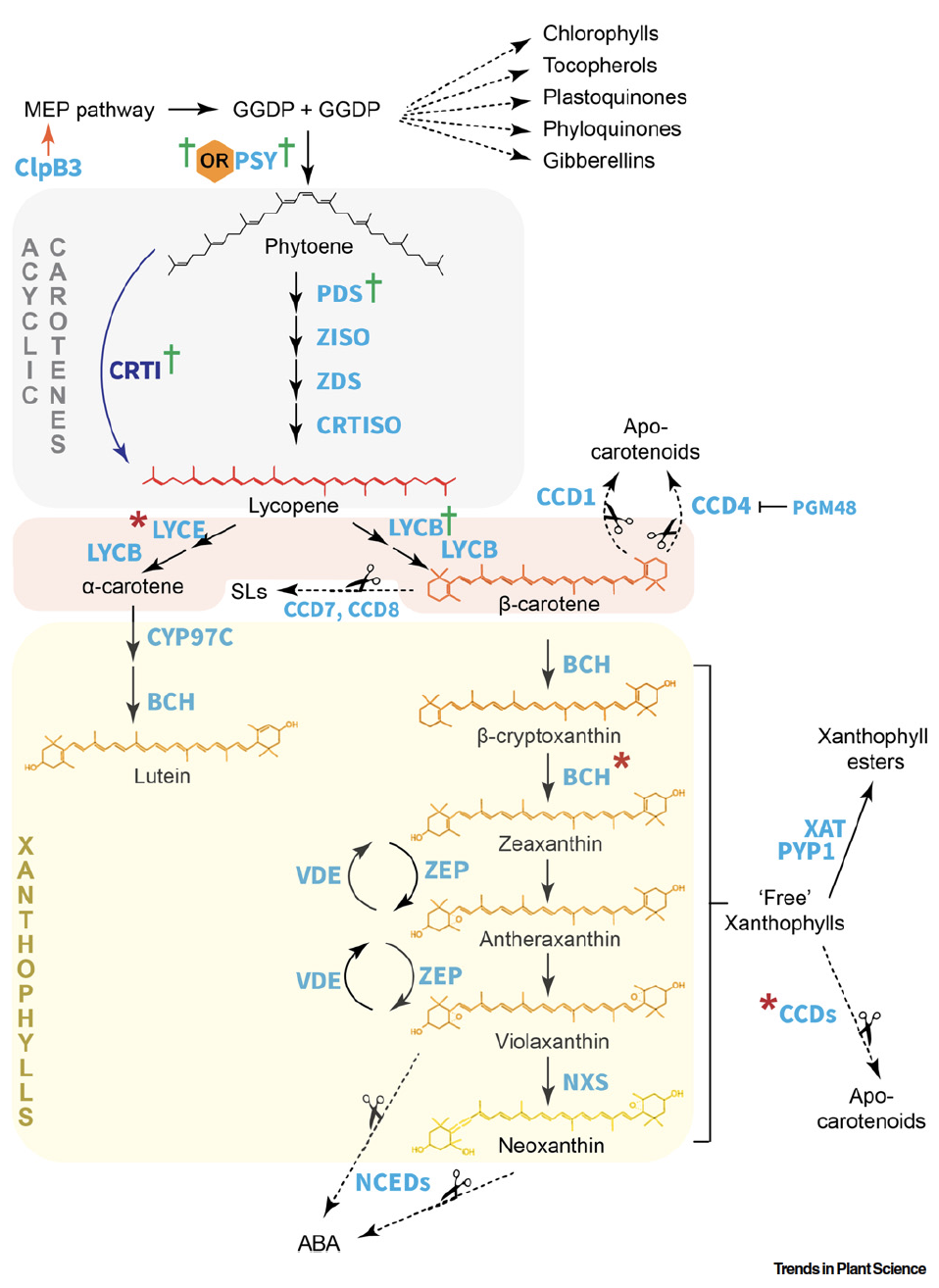博文
Trends in Plant Science:增加主食中类胡萝卜素含量的策略
||
Prospects for Carotenoid Biofortification Targeting Retention and Catabolism
First author: Jacinta L. Watkins; Affiliations: Australian National University (澳大利亚国立大学): Canberra, Australia
Corresponding author: Barry J. Pogson
Due to the ongoing prevalence of vitamin A deficiency (VAD) in developing countries there has been a large effort towards increasing the carotenoid content of staple foods via biofortification. Common strategies used for carotenoid biofortification include altering flux through the biosynthesis pathway to direct synthesis to a specific product, generally β-carotene, or via increasing the expression of genes early in the carotenoid biosynthesis pathway. Recently, carotenoid biofortification strategies are turning towards increasing the retention of carotenoids in plant tissues either via altering sequestration within the cell or via downregulating enzymes known to cause degradation of carotenoids. To date, little attention has focused on increasing the stability of carotenoids, which may be a promising method of increasing carotenoid content in staple foods.

维生素A缺乏症(VAD)是发展中国家普遍存在的公共营养问题,研究者们已经花费了很多努力来通过生物强化来增加主食中的类胡萝卜素含量。 生物强化类胡萝卜素常见的策略包括通过某个特定产物,如β-胡萝卜素的生物合成途径来提高合成通量,或是提高参与类胡萝卜素生物合成途径早期步骤的基因的表达。 近年来,类胡萝卜素的生物强化策略正逐步转向增加植物组织中的类胡萝卜素滞留,主要通过增加细胞内的类胡萝卜素的封存,或是下调已知的、能够降解类胡萝卜素的酶。 迄今为止,很少有人关注增加类胡萝卜素的稳定性,这可能是增加主食中类胡萝卜素含量的一种比较有前途的方法。
通讯:Barry J. Pogson (https://biology.anu.edu.au/people/academics/barry-pogson)
个人简介:澳大利亚麦考瑞大学,博士。
研究方向:植物叶绿体与细胞核之间的通信。
doi: https://doi.org/10.1016/j.tplants.2019.12.021
Journal: Trends in Plant Science
Published online: January 16, 2020

https://blog.sciencenet.cn/blog-3158122-1215035.html
上一篇:the plant journal:拟南芥和番茄中调控胚珠发育的分子机制差异
下一篇:PNAS:拟南芥季节性生活史的塑造因素
全部作者的其他最新博文
- • Plant Physiology:CsMADS3促进柑果中的叶绿素降解和类胡萝卜素合成(华中农业大学)
- • Molecular Plant:LBD11-ROS反馈调节作用于拟南芥的维管形成层增殖和次生生长(浦项科技大学)
- • Science Advances:根结线虫通过调控植物的CLE3-CLV1模块,促进侵染进程(日本熊本大学)
- • Nature Communications:油菜素内酯参与植物营养生长期转变的分子机制解析(浙江农林大学)
- • Current Biology:光合作用产生的蔗糖驱动侧根“生物钟”(德国弗莱堡大学)
- • PNAS:花同源异型基因在叶中被抑制、花中被激活的分子机制(南卡罗来纳大学)